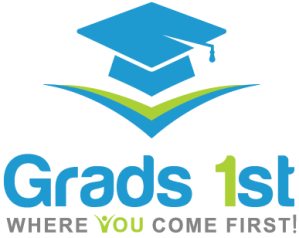 Student loan is a major issue in the States. Almost 25 percent American students take an education loan. There’s more than $1.3 trillion student loan outstanding. This is in excess of credit card loan and is second only to the entire U.S. house mortgage loan. You should put in the application via the Department of Education, check the suitable programs, prepare and send in the right application(s) and tender the right supplemental data. Once the loans get consolidated, you’d become a part of your qualified repayment strategy. The program constituents vary with family income and size.
Student loan is a major issue in the States. Almost 25 percent American students take an education loan. There’s more than $1.3 trillion student loan outstanding. This is in excess of credit card loan and is second only to the entire U.S. house mortgage loan. You should put in the application via the Department of Education, check the suitable programs, prepare and send in the right application(s) and tender the right supplemental data. Once the loans get consolidated, you’d become a part of your qualified repayment strategy. The program constituents vary with family income and size.
If there’s wage garnishment and the applicant’s in default, we instantly get in touch with the collection agency to ensure the wage garnishing is halted. An affordable rehabilitation strategy is then worked out to push the applicant’s status back to current and then put the applicant on a fresh and affordable repayment plan. This not just stops wage garnishment, but also assists with rebuilding/restoring the credit score.
The rehabilitation plan is built through direct consultation with the agency and help restore the applicant’s status. The rehabilitation plan will not hurt or prevent any negative influence upon the credit score, besides halting wage garnishments.
We assist with the preparation and submission of the applicant’s consolidation application. We ensure they participate in the best plan that helps save maximum money and also ensure required supplemental data is included too. Our job’s not complete until the fresh repayment plan is approved by the client.
There are different repayment plans. Based on the financial situation of the applicant, his family size, loan type and loan status, we locate the ideal available program for every client’s unique requirements.
The applicant’s eligibility for the several forgiveness programs are assessed. The forgiveness programs included are Public Service Loan Forgiveness, Teacher Loan Forgiveness, Total Permanent Disability Loan Forgiveness, etc.
The payment cap is 10 percent of your elective income with a maximum tenure of 240 months. Any leftovers at term-end will be relinquished.
You’d remit a fixed monthly sum until the loans are completely paid within a decade.
Payment caps are 15 percent of your non-mandatory earnings, with the maximum term being 300 months. Remaining balances at term-end would be forgiven.
Starting payments are low, which increase once in 2 years. It’s ideal for borrowers who’d like to see a steady income growth with time.
Payment caps are 20 percent of your non-mandatory pay and the maximum term being 300 months. As usual, remaining balances will be forgiven at term-end.
It’s like the graduated repayment plan, but the term is stretched to 300 months.
Most people think student loan is a monkey that’ll be on their backs forever. It’s among the only debts that a bankruptcy cannot completely wipe off. The ground reality is most student loan lenders do not inform borrowers about the government backing that’s available for these loan programs. Therefore, most have little awareness of student loans and the amenities available.
It should not take more than 15 minutes to find out the the different loan programs you can avail. Sign up with Grads1st to know about these programs and your standing as a borrower. Your application for consolidation and repayment would generally take a month or two. Also, our processing time is more than 30 percent faster than the competition.
